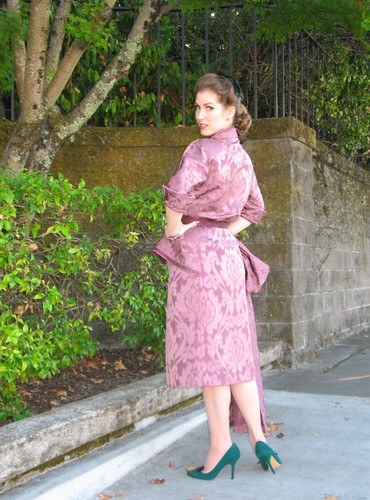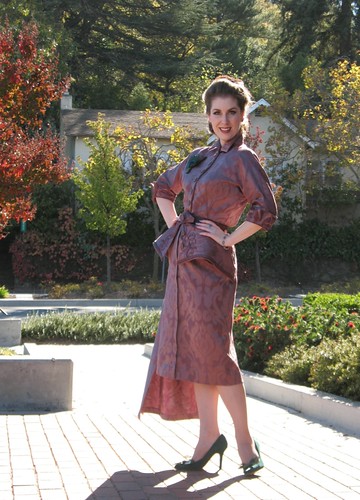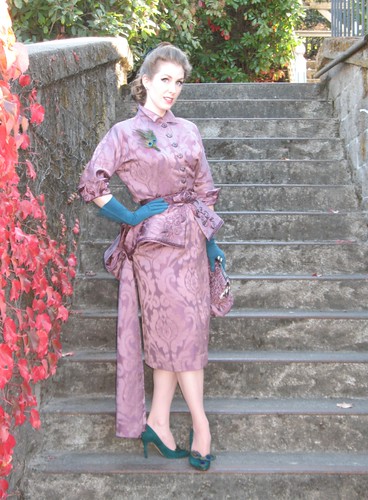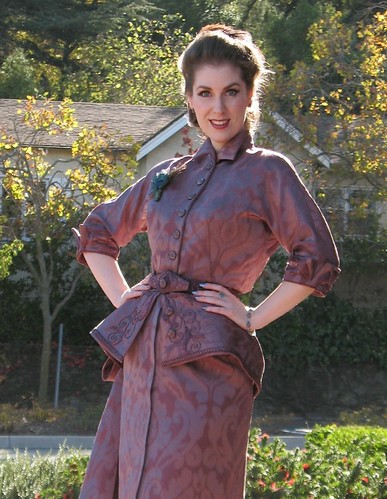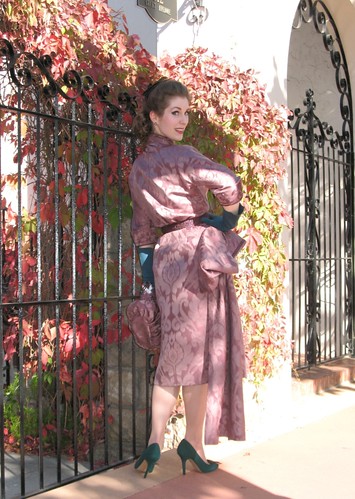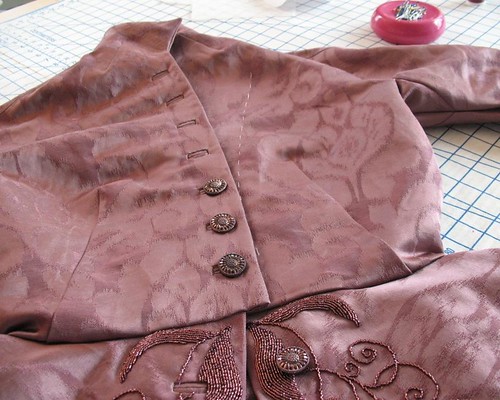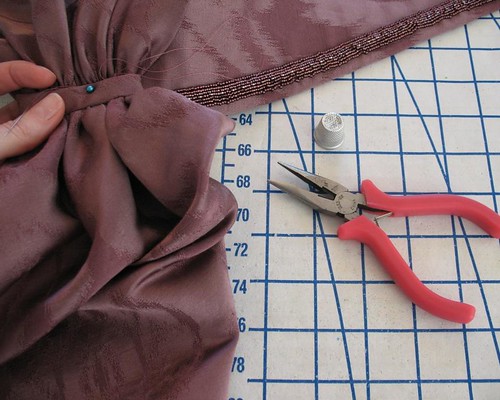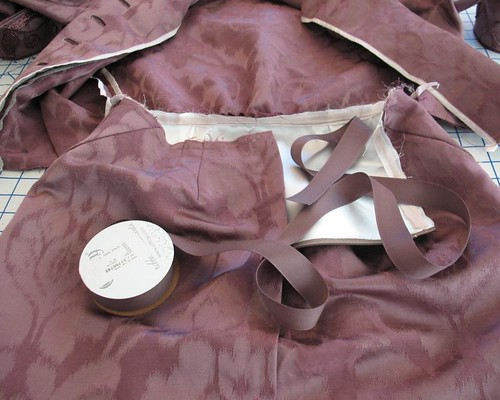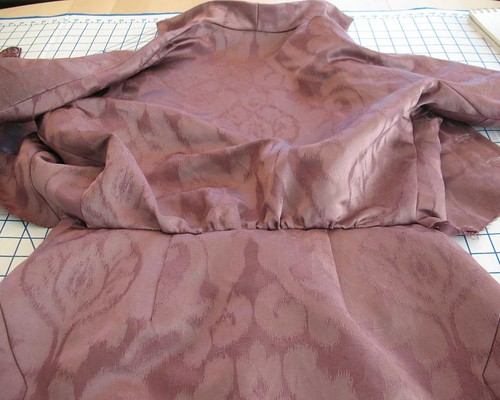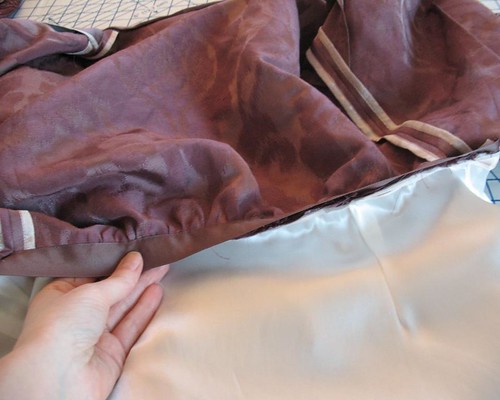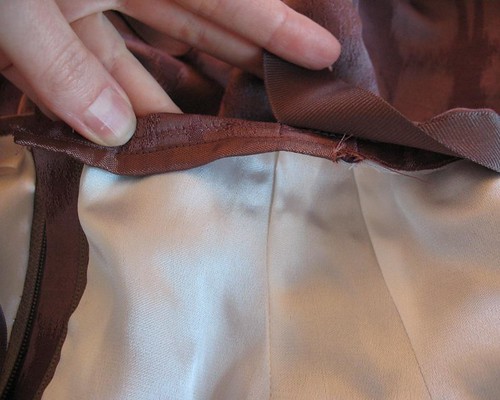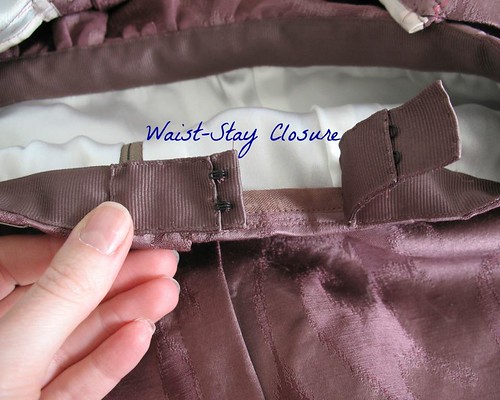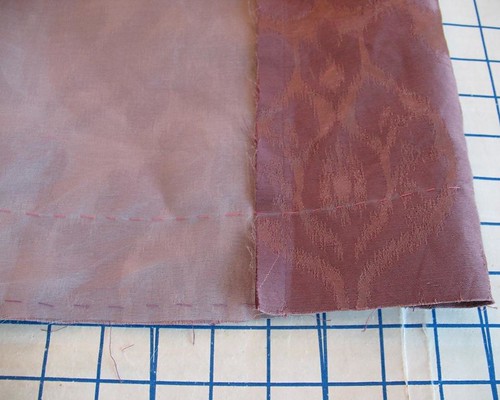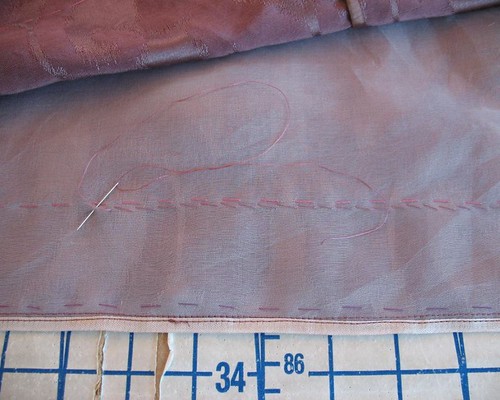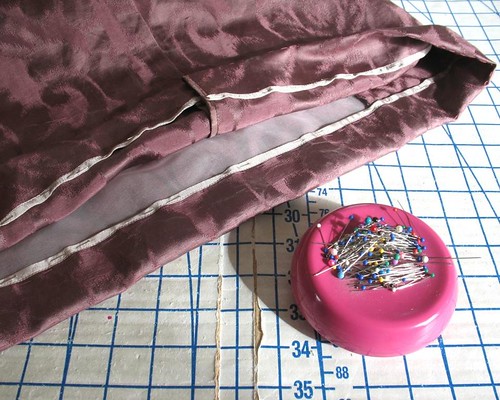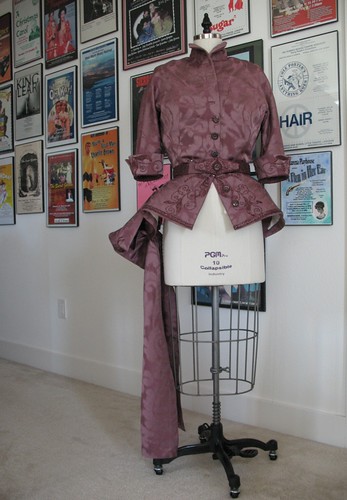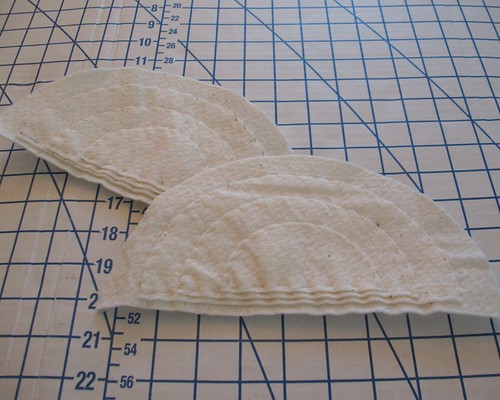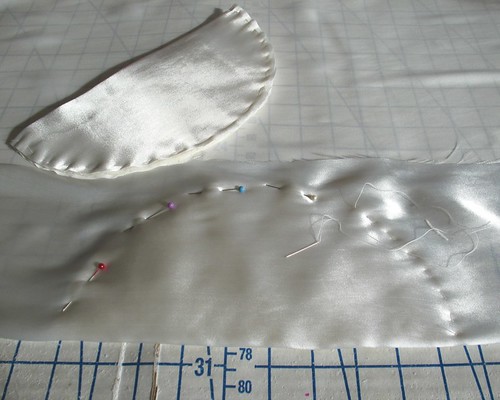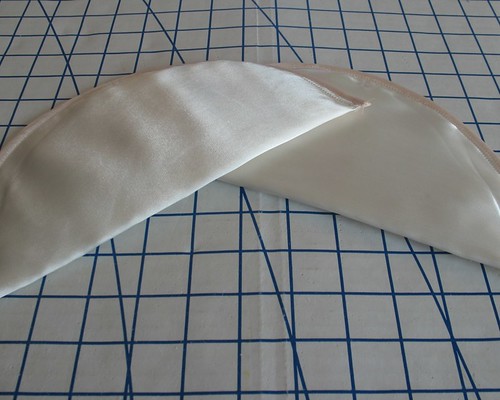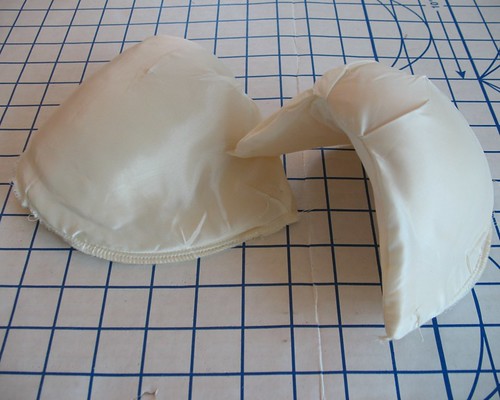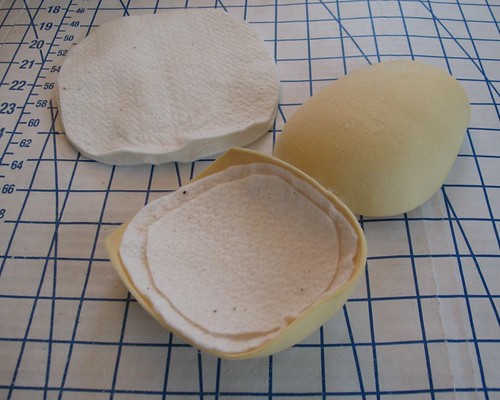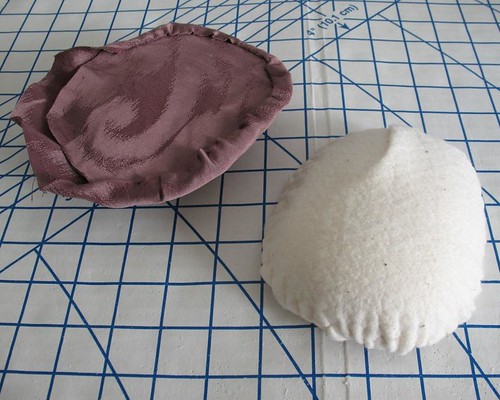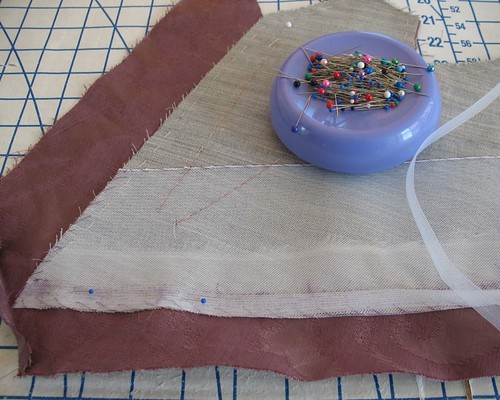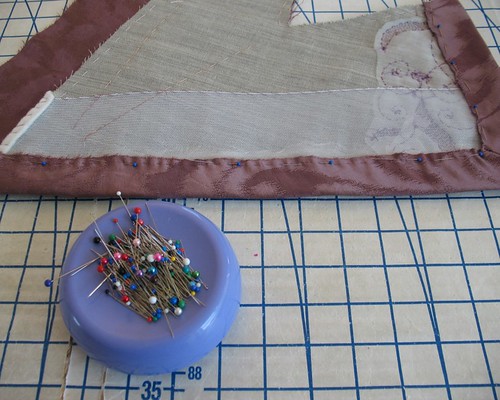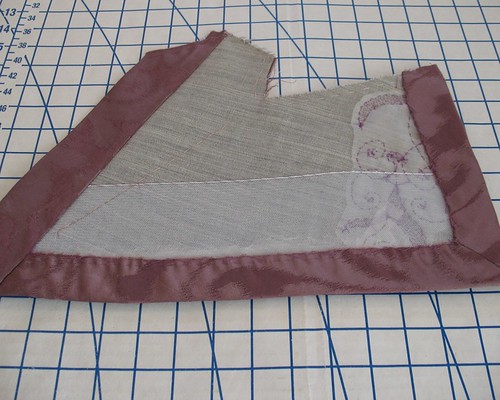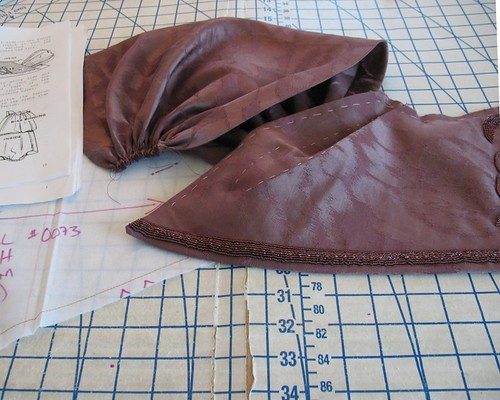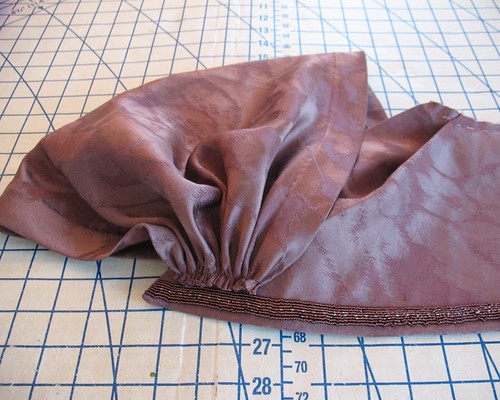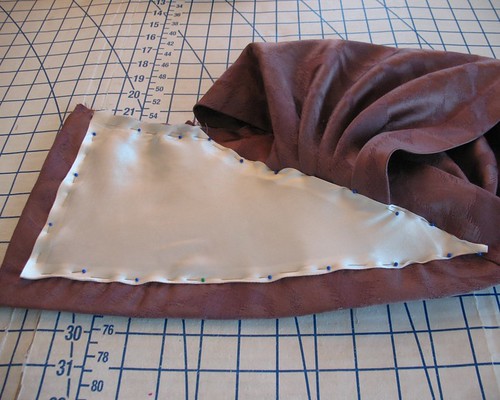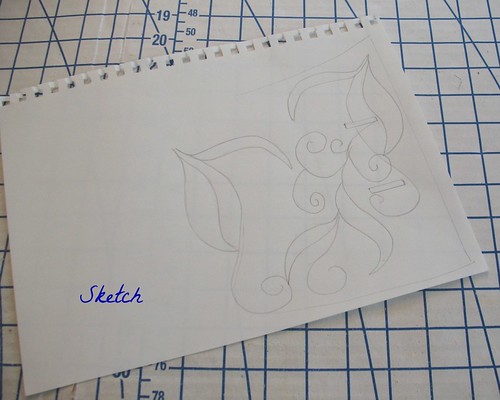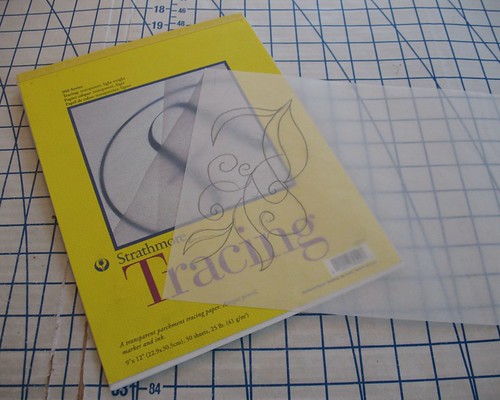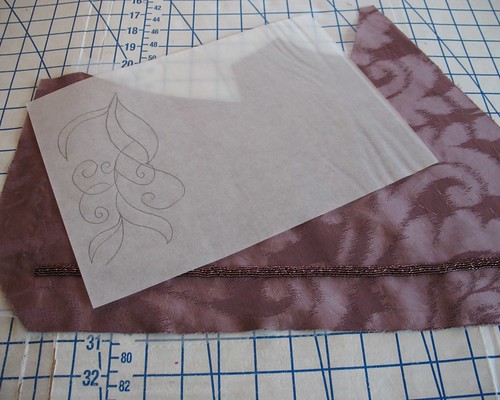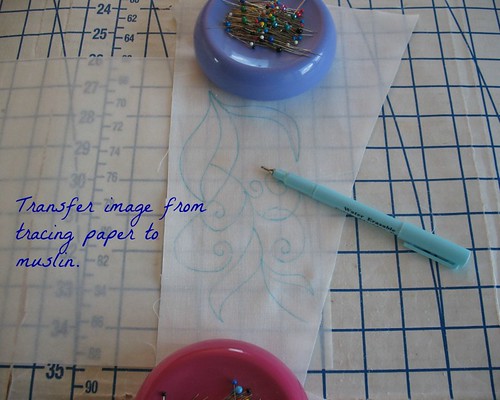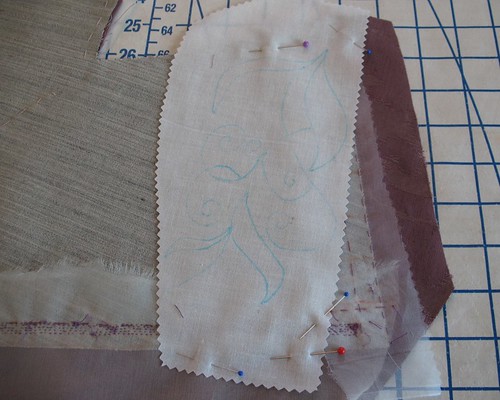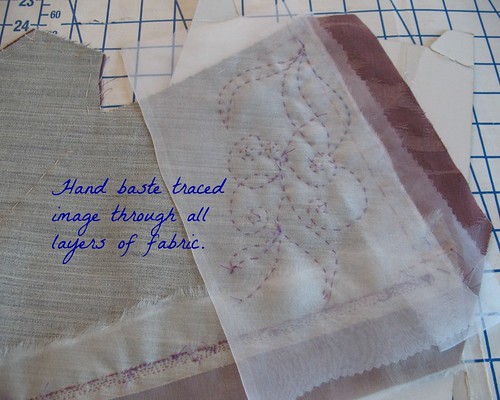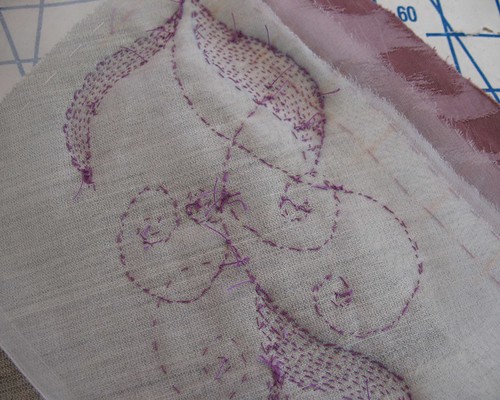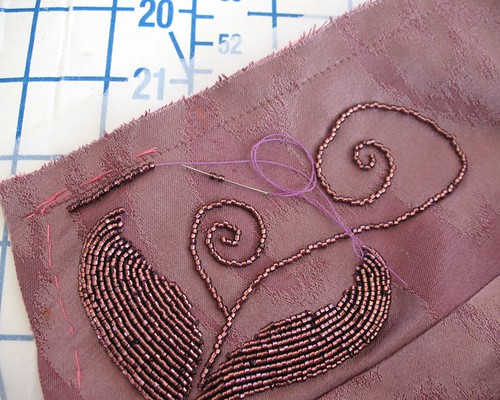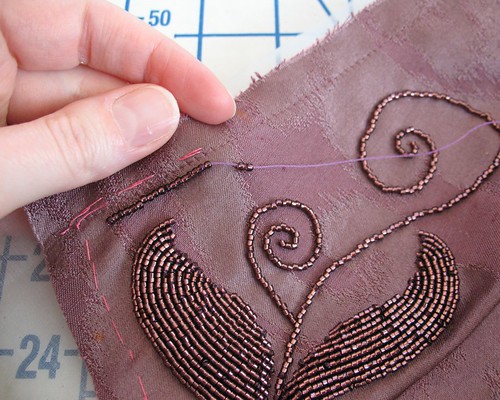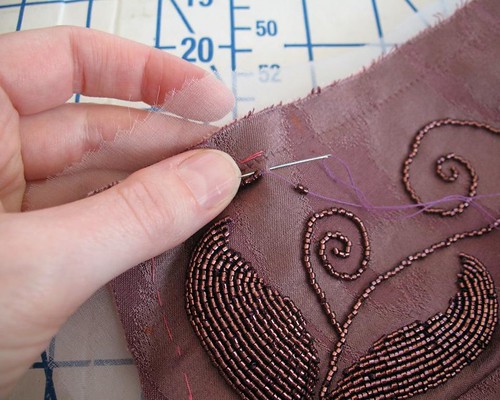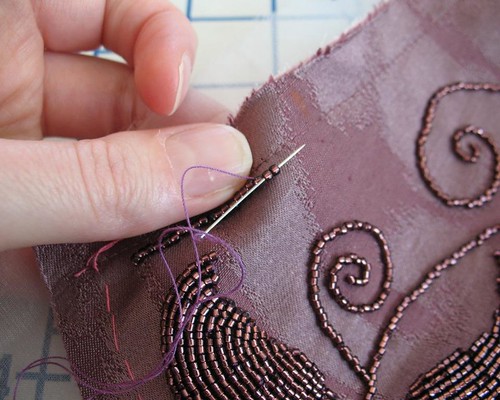Embellishments can really add to a garment. I knew I wanted to add beads on the peplum portion of this dress, and I assumed that I would be happy with a straight border. But that just looked blah to me after
perusing
Pinterest for inspiration.
The first step was coming up with a motif that would work
with the fabric and overall garment design.
I am always drawn to florals, but they did not seem quite right for
this. If there were 48 hours in a day, and I could bead at super
human speed, I would have encrusted the entire peplum, à la this Dior
creation (but would probably skip the eye makeup!).
But that would take years!!
After doing a search for vintage beaded garments, I came
across this dress. The leaf motif was
beautiful, sophisticated, and also had curlicues that match back to the damask
pattern. Perfect!
Using all of the above as a starting point,
I sketched out a few ideas that would fit on the front peplums.
The issue of how to transfer the sketch to fabric was my
first challenge (on top of that, a mirror image was needed for the opposite
side).
And that was when I remembered my tracing paper.
After finalizing the design with paper and pencil, it was
transferred to the tracing paper, and then to a scrap of sheer muslin with a
fabric pen. But then what?
My first inclination was to stitch directly through that muslin.
Since I was going to add a layer of silk organza to
stabilize the extra weight created by all those beads, I decided to place the
design directly onto the silk. Because
it is so sheer, tracing the image was easy.
Curves are a bit of a bother to transfer onto woven fabric
because the pen is dragging through the bias.
To keep things from sliding around, I used quite a few pins!
After pinning the design into place, I hand basted through
all the layers (organza, hair canvas, & fabric) which allowed me to see the
design from the right side without worrying that chalk or pen marks might not permanently
disappear after the beading was finished.
I chose a thread color for basting that was different enough
to be visible, but not so jarring that I would have to remove every last bit of
it.
When the lighting was not so great, I could turn the piece
over to check for the original basted design lines.
I should also mention that before beading the actual peplum, I tested the design
out on a scrap of material. If it turned
out to be a big mess, I did not want to have a ton of pin pricks marring my
peplum pieces.
For the actual beading, I used a single strand of silk
thread. Beading needles are super long
and they would have been awkward for this project, so I found a tiny sharp that fit through the beads.
The beads are applied with a basic back-stitch. With the needle and thread on the right side
of the fabric, I pick up two beads and let them drop the length of the thread
to towards the fabric.
The needle is
pushed through the fabric, right to left, and pulled through to the previous bead
on that row.
Next the needle is pushed
through the two beads, left to right, and the thread is pulled taught. That repeats, following the line of basting stitches.
It was a lot of work, but the end is almost in sight!
[Britex has generously provided the fabric and sewing
supplies for a dress I will be wearing to a formal event in October. I will be
sharing some of the steps and construction techniques with you as I work on
this project over the next couple of months.]



